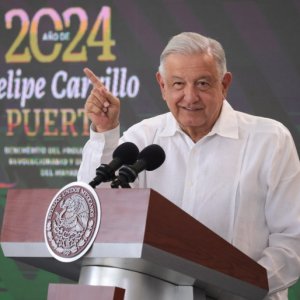Mayo Clinic: Medical Success Achieved Through Shared Knowledge

STORY INLINE POST
Q: Mayo Clinic is a global nonprofit leader in healthcare, research and education. How do these three areas complement each other to make the institution a reference in healthcare provision?
A: At Mayo Clinic, we have a three-shield approach guided by patient centered care, as stated by our primary value: the needs of the patient come first. Our integrated practice calls for collaboration among our physicians and care teams to ensure teamwork and continuous learning. We also learn through research and we excel at putting this learning and knowledge into action. Education is applied through shared learning, as our discoveries and therapies are used in patient care and also taught in the US and globally. We have been doing this for more than 150 years.
Q: How do you combine attention, quality and innovation in the treatments you offer?
A: Mayo Clinic is an integrated clinical practice. Our physicians and other health care providers, work together to offer the best approach. Physicians and their teams evaluate the needs of each patient in real time. This collaborative approach increases the quality outcomes of our organization, providing the best care options to patients.
We specialize in serious and complex health cases. Mayo Clinic has been recognized as the No. 1 organization in the US by US News and World Report.
Q: Why is it important for Mayo Clinic to have an international presence and what does this presence entail?
A: Historically, Mayo Clinic has established international collaborations. The Mayo brothers traveled to Mexico multiple times in the 1920s and early 1930s, their trips were centered around learning and teaching. Mayo Clinic believes that medicine will grow and improve the health status of the global community through these exchanges.
Cure, Connect and Transform are the elements that form the basis of our 2030 strategy. Cure means we need to develop new techniques, devices, therapies and approaches to medicine. However, we do not want to limit this to the US, which is why we have collaborations in multiple countries, such as Mexico, to transfer improved protocols, quality and safety practices that will help improve the work organizations do and, therefore, patient outcomes. In terms of Connect, we live in a digital world where data and digital health have gained relevance. There is a need to connect all these pieces. We have been working on a number of collaborations to understand data and integrate technology into healthcare. We have noticed that most organizations are trying to integrate a digital presence into their physical footprint because they have understood that these are complementary, healthcare delivery will reside between bricks and clicks. In this era, when a company says it will grow, it is referring to both its physical and digital presence.
At Mayo Clinic we reflected on what we are about, which is providing answers and hope to patients. Patients come to the organization on a journey, which can become more efficient and easier to understand through our system. Medicine has been disrupted by digitalization to improve service provision. This does not mean that the clinical practice can be replaced. There will always be a need to see patients for surgery, therapy and diagnosis but we also need to find ways to connect with patients where they are, including in their homes. It is essential to collaborate with other organizations so more patients can receive the quality of care Mayo Clinic can offer without having to come physically to the facilities.
In terms of Transform, we are incorporating new technology and individualized therapies to help address the complex needs of the patients. As the population grows and lives longer, people will develop more complex health needs. We are seeing an increase in cancer, cardiovascular diseases and transplant needs. At Mayo Clinic we see roughly 1.3 million patients per year including patients from 140 countries within the serious and complex niche.
Q: What has been the international impact of your research and educational practices?
A: In terms of research, we have understood that the more we know, the better the job we can do. Most of our research has been centered around the population in the US because this is where we mainly operate. We are expanding to the UK and the Middle East. We have Mayo Clinic ventures in London and in Abu Dhabi, complemented by different hospitals around the world that have different demographics. We need to learn how advanced therapies work in different population groups to generate knowledge and deliver better results.
We are well aware of the human talent around the world and we want to help elevate their competences by sharing our knowledge with them, but also by learning from their local expertise. It is common for countries to have a limited number of specialist doctors and nurses and this is where our education shield comes into play.
Q: How is Mayo Clinic supporting healthcare’s digital transformation?
A: We were a pioneer institution in medical records development. Due to our multi-specialist approach, physicians started to use a single record for their findings and this is how our integrated documentation began. In fact, the first medical record to exist in the US was started by the Mayo Clinic.
Mayo Clinic has three primary locations in the US—Rochester, Minnesota; Phoenix and Scottsdale, Arizona; and Jacksonville, Florida--and the Mayo Clinic Health System has facilities in Minnesota, Wisconsin and Iowa. All of them are interconnected through a single platform to allow treatment continuity regardless of the facility patients go to. Mayo Clinic is one organization, so the patient should feel as if they are visiting the same facility and receiving a consistent and high-quality approach to care. We are a physician-led organization, professionally run by an administrative team under an engineering model, which means everything has a process and a way of happening. Likewise, this model spurs innovation, which is a result of research. We know when we need better tools, visualization or therapies in our clinical practice and this has led us to develop solutions and sometimes commercialize them.
Q: Amid the COVID-19 crisis, how has Mayo Clinic demonstrated its leadership as a care provider?
A: This pandemic has pushed us to accelerate innovation. In terms of leadership, it was amazing to see our entire organization moving in one direction to ensure the safety of our patients and our own staff. We faced financial difficulties, like other organizations, and moved quickly to demonstrate leadership. At the beginning of the pandemic, we stopped elective operations because we needed to understand the transmission behavior of the virus and possible ways to treat it. Initially, we developed a task force to tackle this understanding and this led us to the creation of guidelines for patient safety, reduced transmission in public areas and operating rooms, as well as outpatient and inpatient settings. These were globally shared, which was significant for the entire community at the time.
As the pandemic advanced, Mayo Clinic began researching the different therapies and vaccines that were being developed. We had experts focused on clinical, innovation and technical approaches discussing solutions. At a national level, we became a leader of the National Coalition for COVID-19. To date, we have implemented dozens of research protocols to understand the disease in different contexts, such as cancer, cardiovascular disease and diabetes. We have published a number of research papers on approaching the virus. In the field of diagnosis, Mayo Clinic Laboratories processes millions of tests from other organizations domestically and internationally.
Q: What is Mayo Clinic working on regarding the pandemic?
A: The COVID-19 pandemic accelerated innovation at Mayo Clinic. To date, we are improving our telemedicine capabilities to construct a mechanism to meet the patients where they are and also, we are developing advance care at home (home hospital) to address the evolving needs of the patients. We are striving for more innovation, expanding our global collaboration to really make a difference in patients’ lives. Through collaboration with our local and international partners, will we build something strong together.
Mayo Clinic is a nonprofit organization committed to innovation in clinical practice, education and research, and providing compassion, expertise and answers to everyone who needs healing.








 By Miriam Bello | Senior Journalist and Industry Analyst -
Fri, 04/30/2021 - 10:56
By Miriam Bello | Senior Journalist and Industry Analyst -
Fri, 04/30/2021 - 10:56
















